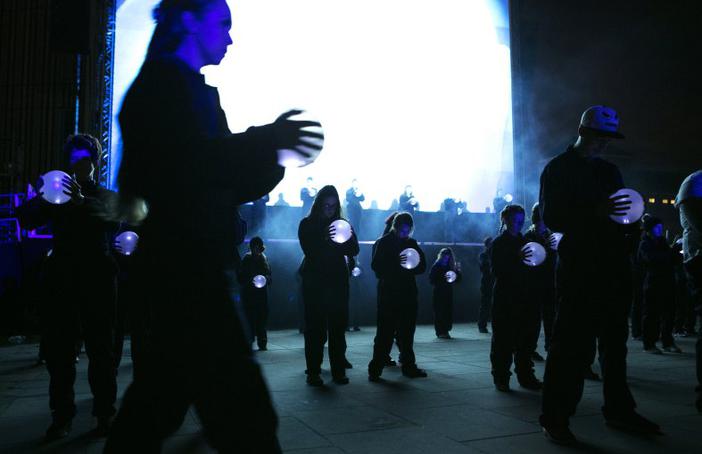Blog Post
"We are engaged on what might prove to be one of the most significant cultural journeys of our time"
Sir Nicholas Serota, Chair of Arts Council England, writes about the significance of the Creative People and Places programme and why the Arts Council is committing a new round of investment.

Sir Nicholas Serota, Chair of Arts Council England spoke on the closing panel at our People Place Power conference about the values and principles of Creative People and Places and how it is influencing thinking in the cultural sector.
The joy of Creative People and Places (CPP) flows from its incredible variety – it is made up of a multitude of distinct projects that have individual relationships with different communities. But all have a focus on culture, and all are underpinned by a common set of values that treat communities not as cultural consumers but as participants, co-creators and equals.
Through CPP, we are engaged on what might prove to be one of the most significant cultural journeys of our time. It is a journey of discovery that flows from the direction that public art and culture has moved since the Second World War and the founding of the Arts Council. Since then we have seen steps towards greater democratisation, not always smooth, but steadily winning ever-larger audiences for the arts.
There have been landmark moments and in recent years we have seen remarkable examples of art and culture bringing people together in ways we would never once have believed possible, including Hull’s tenure as City of Culture, which kicked off with Spencer Tunick’s project in which 3200 naked, blue-painted people of all shapes and sizes, paraded through the city at dawn.
And we have seen greater participation and cultural self-determination, with people given more opportunities to create as individuals and curate as communities.
Society needs this now, for three reasons. First, because everybody should be able to enjoy the pleasure and the opportunity for personal expression that art and culture offer. In the best schools in this country, both state and private, they teach their pupils acting, drawing, singing, and debating and encourage creative thinking. I want everyone to enjoy these opportunities. That’s fair and it’s also necessary for society if we are to do something about our increasingly stagnant social mobility and make better use our use of our talent.
Secondly, many people feel that their voices are not heard; that they have a vote but cannot influence the way that their communities are regarded and resourced. I’m not claiming that participation in a cultural project is the answer to it all. But culture can make a contribution to redressing imbalances of power, when we listen, encourage people to speak, and don’t finish people’s sentences for them. When we recognise that everyone has a voice and give respect.
Thirdly, art and culture can help revitalize our sense of community and place at this time of rapid economic and social change. Culture is what binds humanity together; and it is also what makes us distinct. A sense of a shared and communally owned local culture is important in an age when communal focal points, whether libraries, pubs or places of worship, even shops on the High Street, are disappearing.
The enduring aspects of the CPP model will be values and principles about a way of working with people that is applicable both within and well beyond the wider arts and cultural sector.It will also inform the development of the Arts Council’s new 10-year strategy.
What of the future?
Well, the Arts Council has a long-term commitment to Creative People and Places. We will be backing that up with further investment. We will be allocating £37 million for a new round of funding between 2018-2022.
Of this, £24 million will be for new places, those identified as ‘less engaged’ by the recent Active Lives survey. This brings the total amount we will have committed to CPP to £90 million over ten years
The future could be full of intriguing challenges. What if, for instance, CPP drives a major change in social attitudes to culture? And begins to change the way that our other National Portfolio Organisations develop and channel their activities in programmes that are more fully owned and directed by their communities
"Creative People and Places shows that to reach more people, the arts and cultural sector will need to change what, where and when we programme"
Creative People and Places shows that to reach more people, the arts and cultural sector will need to change what, where and when we programme, and broaden our choice of partners - CPP has been a game changer in terms of partnerships, which have included allotment societies, walking groups, refugee groups, residents associations, playgroups, language and supplementary schools and heritage groups. There’s also been haulage companies, a rugby club and Desi pubs in the Black Country
Not everything that we are learning through CPP is new, but this is the first time such a project has been tried at scale, and the breadth and weight of learning will give an inspiring message to local authorities, ministers and Government.
The success of CPP has shown that art and culture can help everyone lead richer lives and communicate better across the divisions that have – temporarily I hope - arisen in our world.
Sir Nicholas Serota, Chair, Arts Council England
Image: Dan Prince







